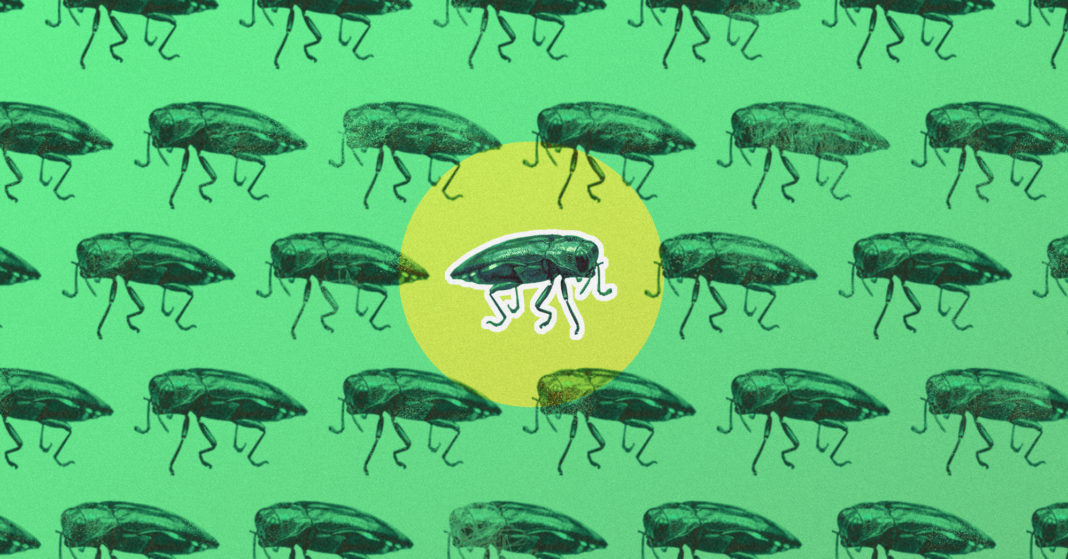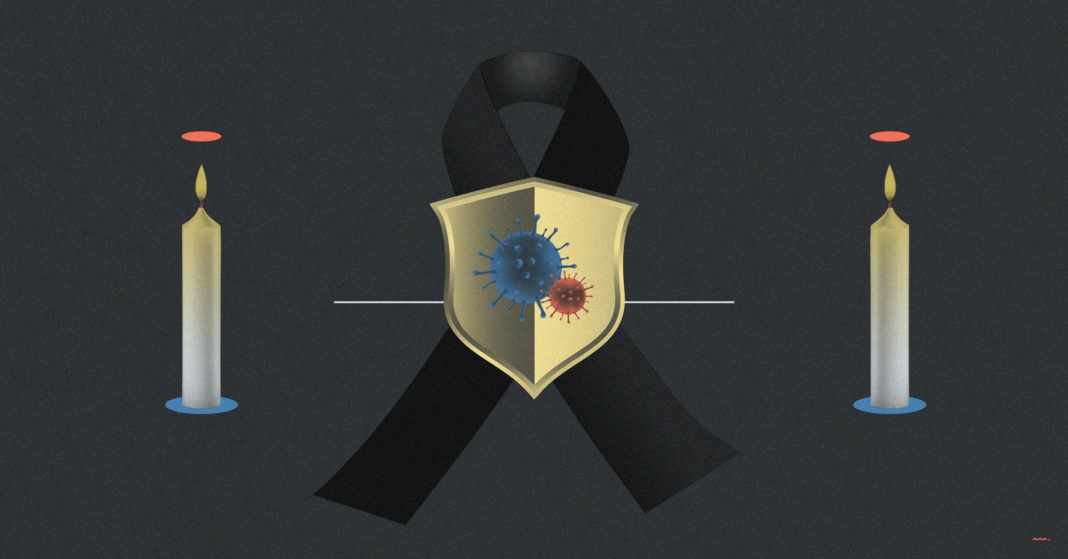The evasive Emerald Ash Borer destroys ash trees. This tiny insect is a fascinating green color, eye-catching and shimmery. You wouldn’t imagine that this beautiful beetle, no bigger than a penny, could cause so much damage.
Texas A&M Forest Service began monitoring for the beetle in 2011. The first positive detection was in 2016 in Harrison County just south of Karnack, Texas. Since then, there have been positive detections in Cass (2018), Marion (2018), Tarrant (2018), Bowie (2020) and Denton (2020) counties.
Why is this beetle such a pest?
Before mating, the EAB beetles feed on the leaves of ash trees. Then the female will lay her eggs just under the bark of the tree, and through the winter months those eggs transform into larvae, which then begin to feed on the wood of the tree.
This feeding creates “galleries” just under the bark and within the outer edges of the wood that affect the tree’s ability to uptake water and nutrients from its root system up to the leaves in the upper parts of the tree. From there, things start to go downhill.
In the spring, the larvae morph into juvenile beetles, and when they exit the tree, they leave a small D-shaped hole. The juveniles fly to the top of the tree to feed and repeat the cycle.
“Typically, it takes a few years of subsequent feeding and emergences to outright kill the tree, but over time you will begin to notice parts to the canopy thinning or entire branches dying,” explained Shane Harrington, Texas A&M Forest Service program leader, in an email on Tuesday.
How can you save your tree?
Harrington said that Texas A&M Forest Service receives numerous calls from the public about potentially infested ash trees.
Here is what to do if you suspect your tree is in trouble.
“For those needing to protect their tree from EAB, the best solution is systemic injection with emamectin benzoate, which can aid the tree in resisting EAB attacks,” wrote Harrington. “However, timing is critical so we recommend that treatment be done before an initial EAB attack or when EAB is known to be about 15 miles away, or general rule of thumb is when EAB is in your neighboring county.”
Harrington says it’s important that you use a licensed pesticide applicator, which many Certified Arborists are qualified to be. “Unfortunately we can’t save every ash tree from EAB, but with planning we can protect and reduce the chances of EAB attacks on high value and historically significant trees.”
The Texas A&M Forest Service has been working with many communities and cities through the years to help prepare them for the beetles, including Tarrant and Denton counties.
“Trees play a vital role not only on the rural landscape but in our urban communities as well. So we want to educate community officials and members of those communities on what to look for, treatment options and how to handle replacing trees impacted by EAB,” wrote Harrington.
To learn more about the current status of EAB in Texas visit http://tfsweb.tamu.edu/EAB.
If you have concerns about your ash tree, visit http://tfsweb.tamu.edu/contactus to find a local TFS office.








